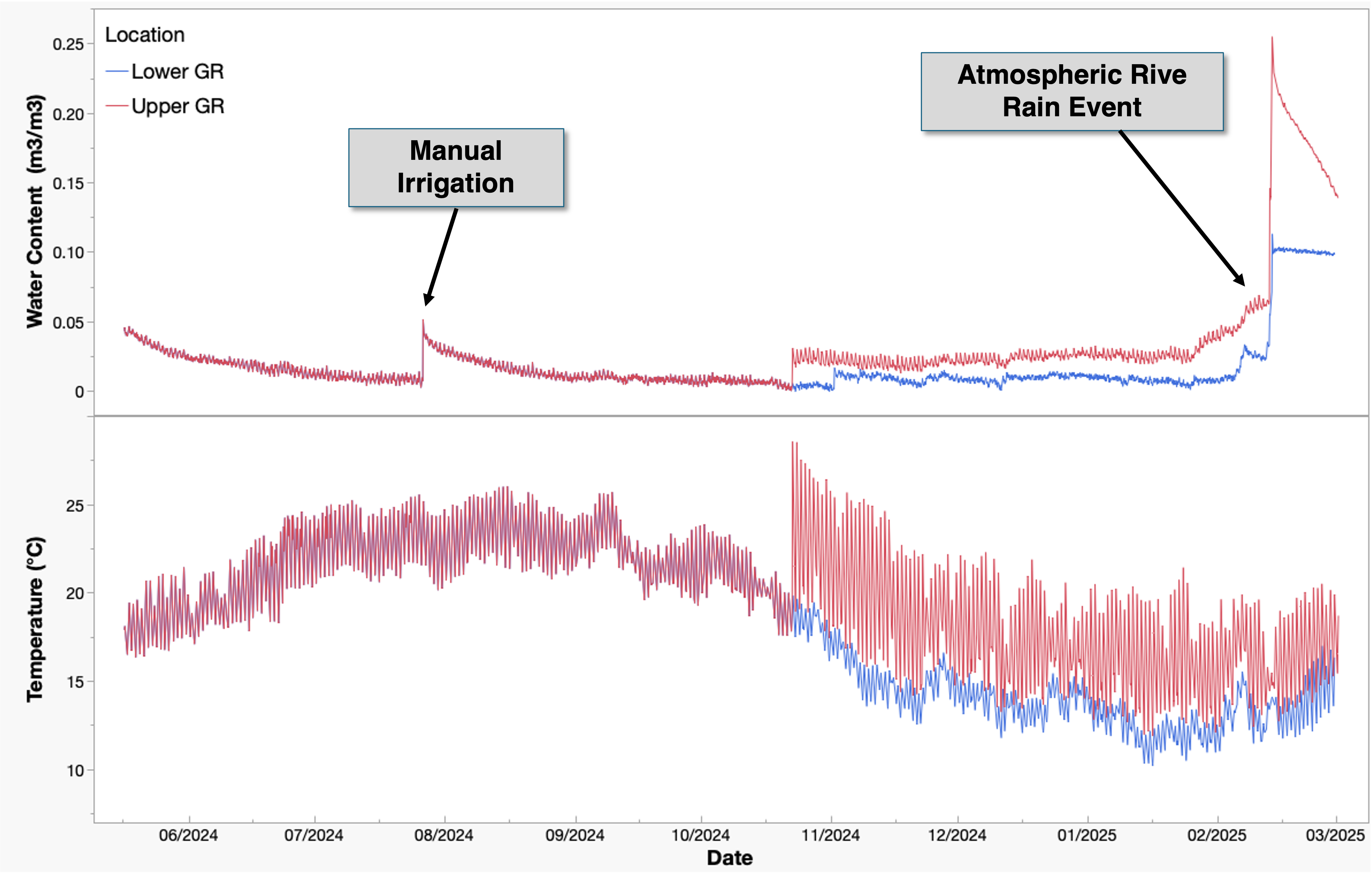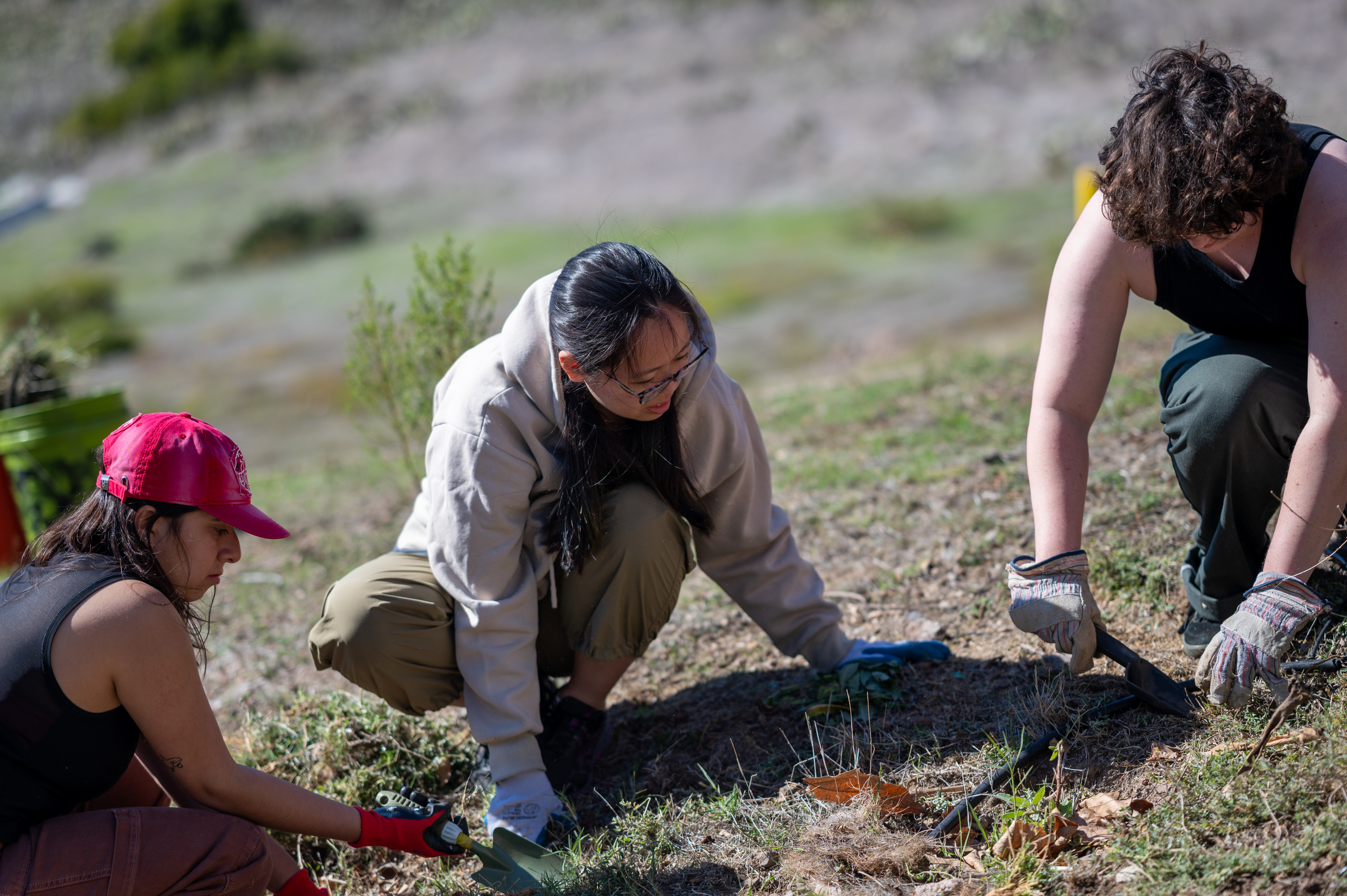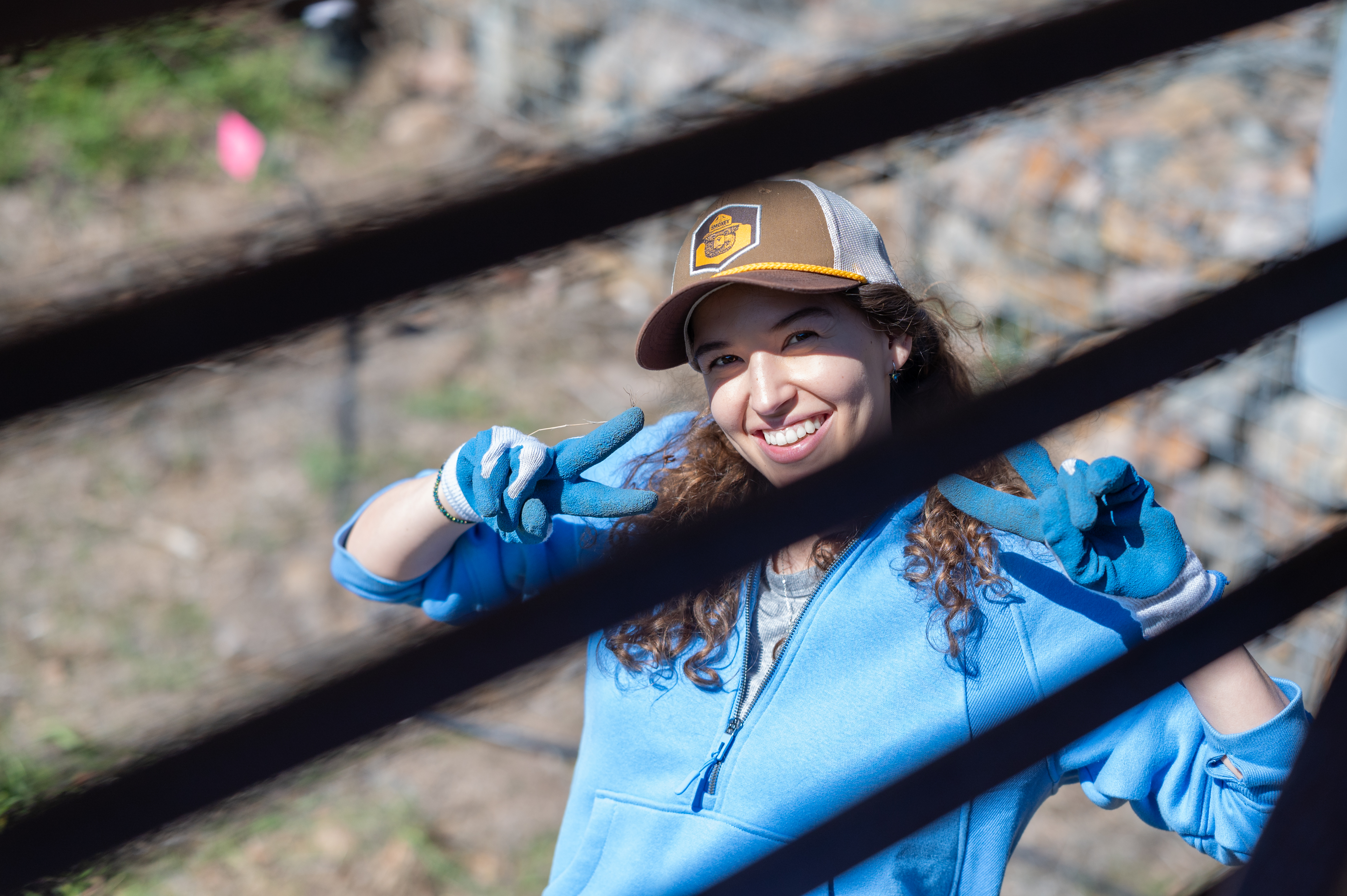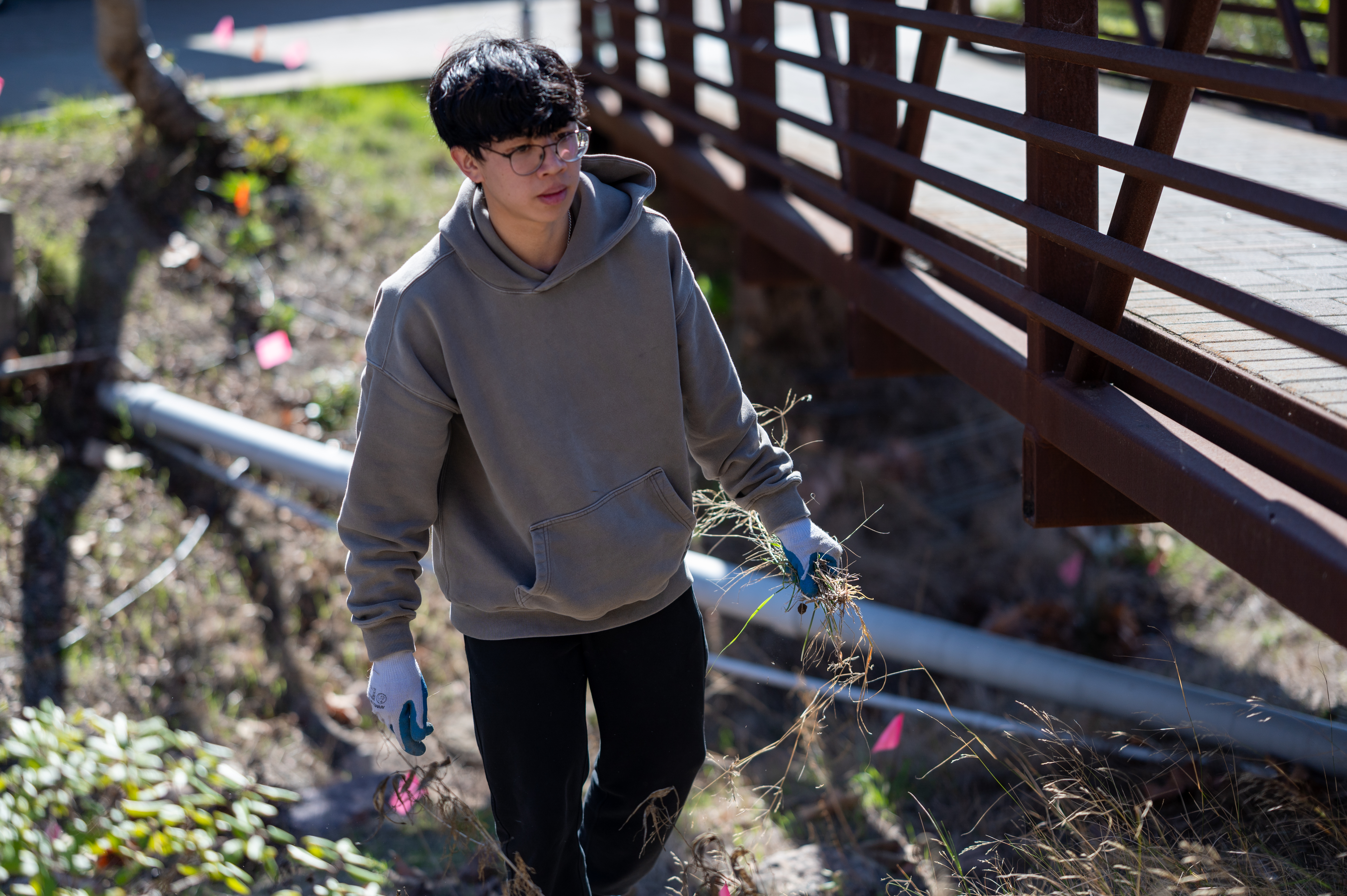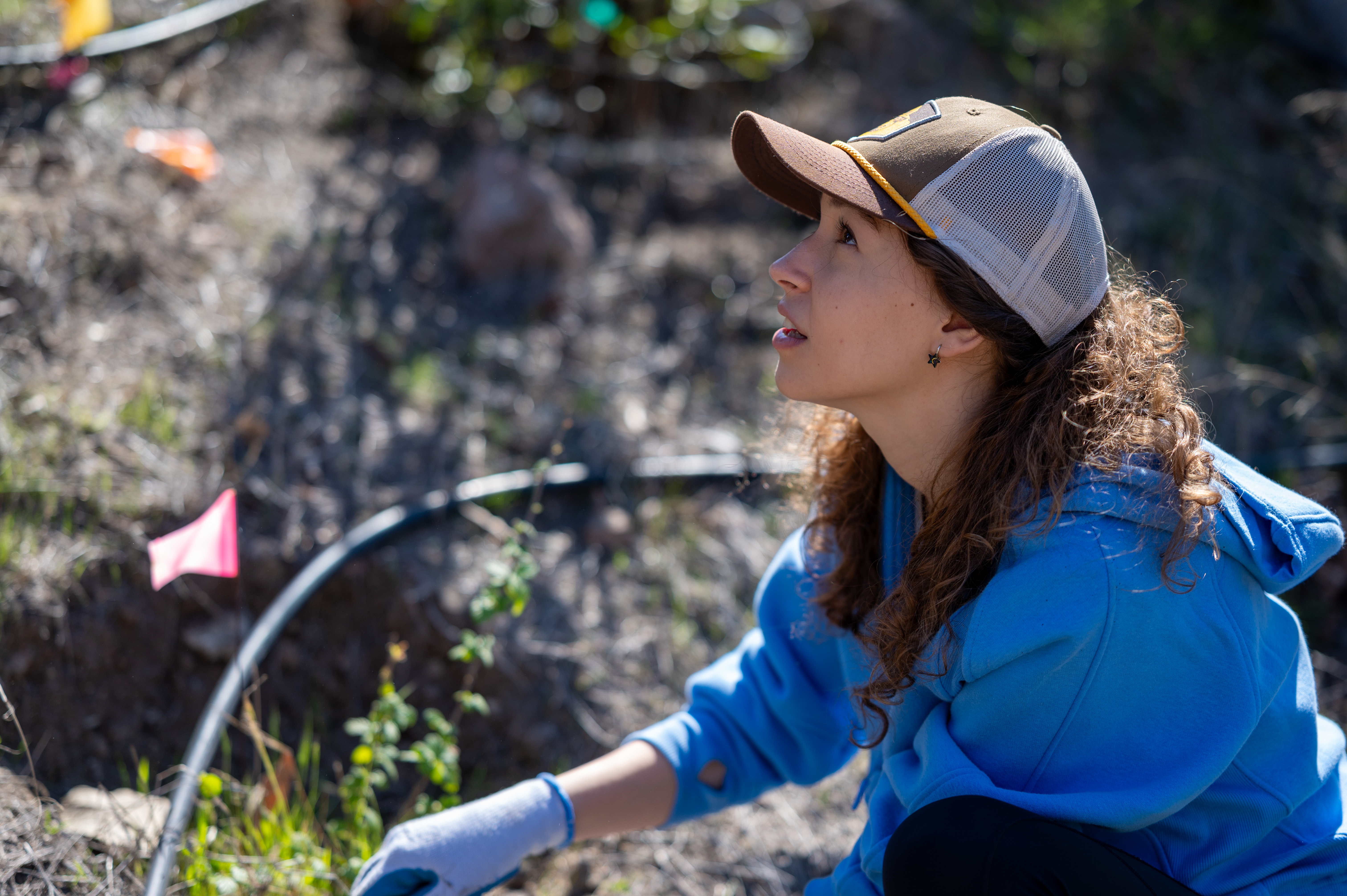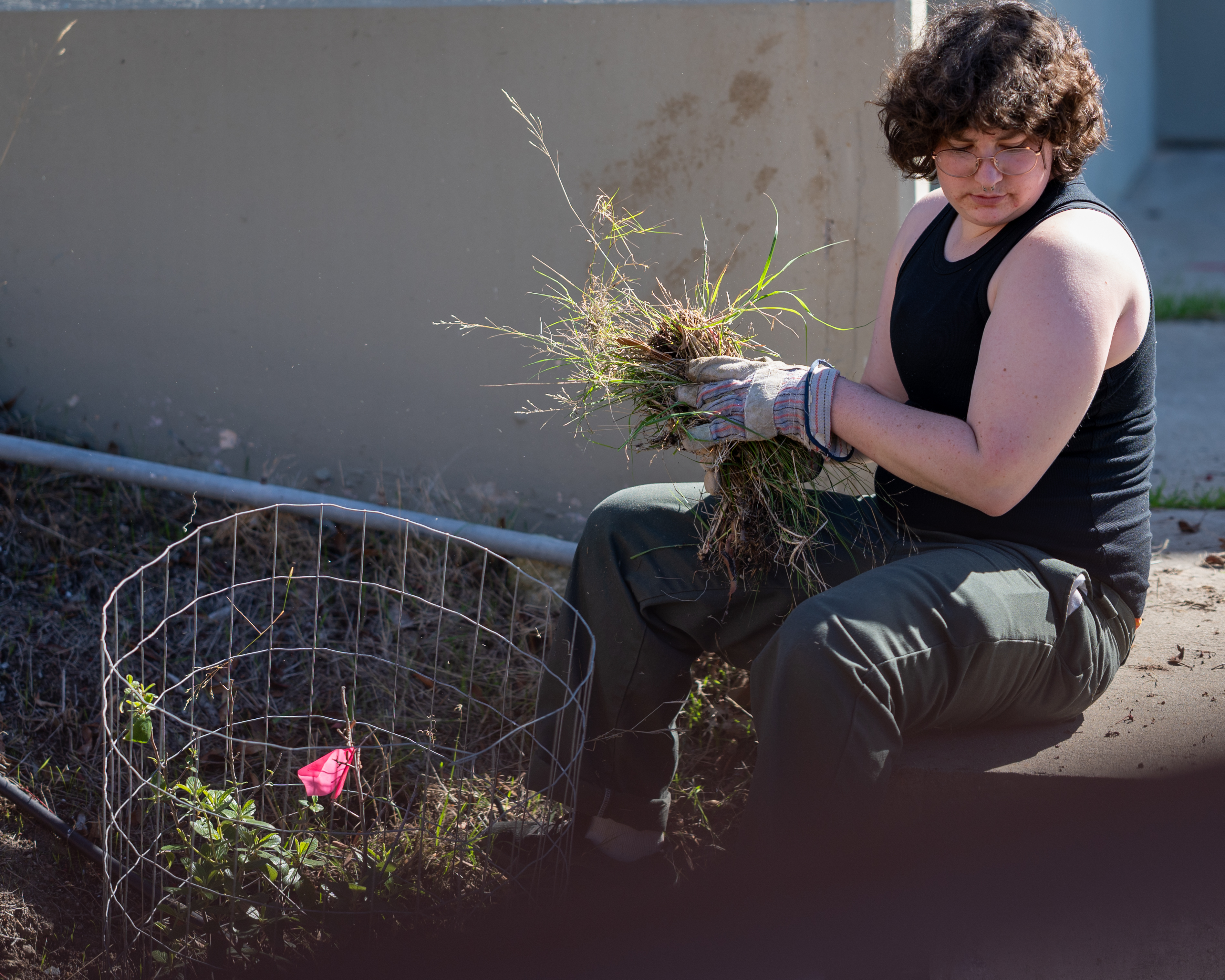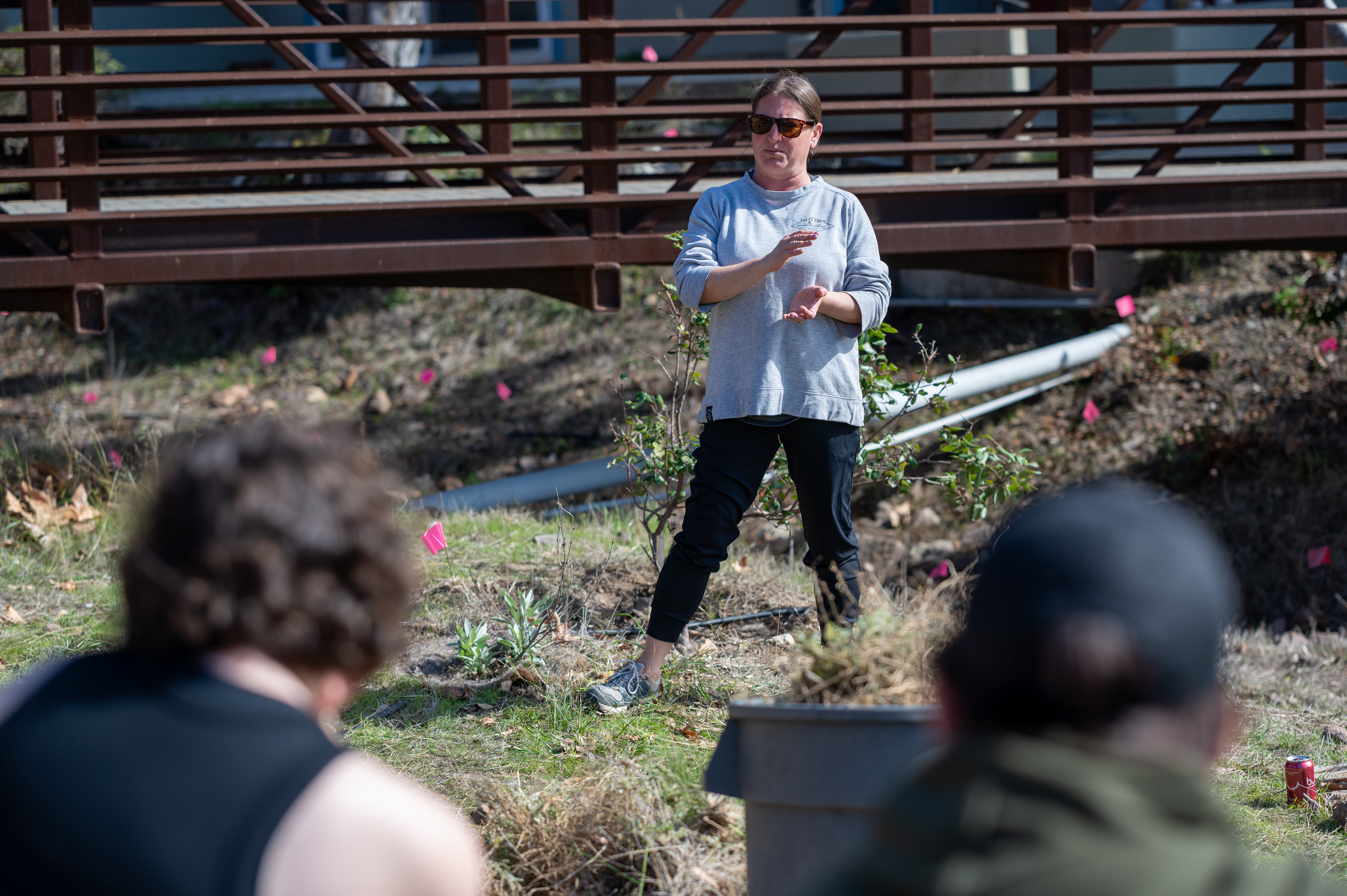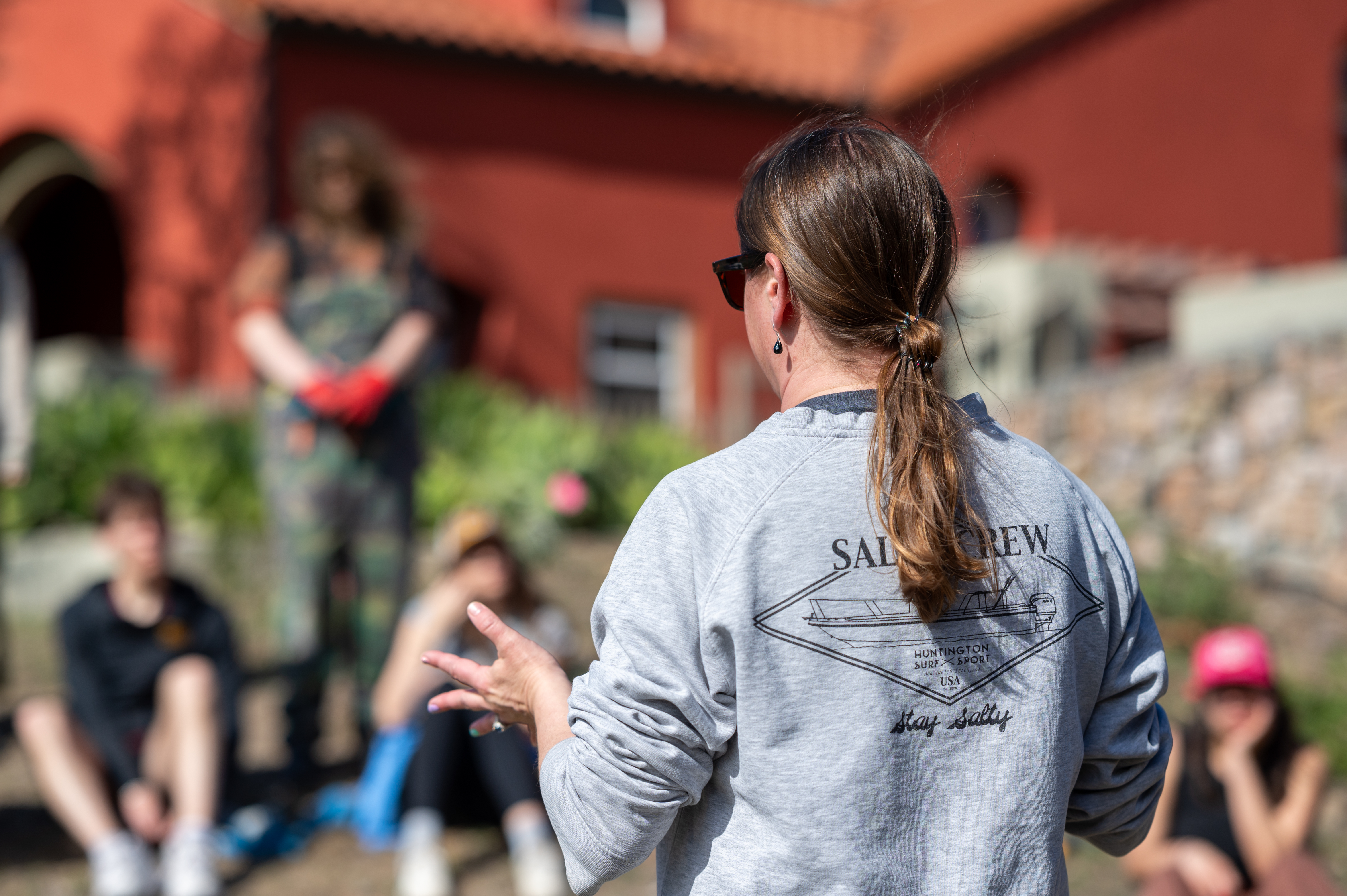
FERRY BOATS, VANS & A BIT OF MAINTENANCE
Catalina Test Plot
By Scott Applebaum and Berit Cummings
USC Environmental Studies
DATE: February 27, 2025
︎WEATHER NOTES: 58℉, overcast/mostly cloudy, with light winds up to 10 mph in the afternoon
︎PLANTS SIGHTINGS: Records of introduced and native species presence are drawn from observations during site maintenance and from records submitted to iNaturalist by students within our group.
Among the invasive species we worked to remove (and could identify) were:
| Atriplex semibaccata | Australian saltbush |
| Brachypodium sylvaticum | False brome |
| Foeniculum vulgare | Fennel |
| Salsola australis | Russian thistle |
Australian saltbush was thick in higher elevations above the ravine bed in well-lit and drier areas less subject to shading from structures or ravine banks. The false brome (or other introduced grasses) was prevalent in more shaded areas including in the ravine bed, in between building structures and on north facing slopes. Substantial stands of Russian thistle occurred especially in the sunny, open area east of the bridge leading to the cafeteria. A fully grown Russian thistle that had begun to die was also removed, hopefully mitigating the threat of the invasive tumbleweed spreading its seeds.
Berit identified eight different native species using the Seek extension of iNaturalist and additional observations from other students were drawn from records in iNaturalist. Some common plants in the area included California Sagebrush, Lemonade Berry, and Narrowleaf Milkweed. Lauren Czarnec ki-Oudin told us that she had recently planted small specimens of common yarrow and verbena.
| Artemisia californica | California sagebrush |
| Asclepias fascicularis | Narrow-leaf milkweed |
| Comarostaphylis diversifolia ssp. planifolia | Summer holly |
| Baccharis pilularis | Coyote brush |
| Encelia californica | Bush sunflower |
| Artemisia douglasiana | California mugwort |
| Rhus integrifolia | Lemonade berry |
| Heteromeles arbutifolia | Toyon |
| Salvia apiana | White sage |
| Nassella pulchra | Purple needlegrass |
| Erythranthe cardinalis | Scarlet monkeyflower |
︎WILDLIFE SIGHTINGS: Wildlife sightings were limited. One student identified a Western Small Milkweed Bug (Lygaeus kalmii kalmii) in a grassy area and numerous California ground squirrels were heard and seen nearby (Otospermophilus beecheyi). While we were working within, birds moved in and out of the ravine. Ravens watched us from the eaves of the dormitory roof while smaller birds circulated through the larger trees lining the ravine margin.
︎HUMAN ACTIVITY: This visit was relatively short, and our time was primarily devoted to maintenance efforts in the of the plot including removal of invasives/weeds and watering of native plant specimens.
GENERAL NOTES: This visit brought students from the USC Environmental Studies Program to Wrigley Marine Science Center as part of the course, ENST 495 Senior Seminar (Urban Ecology). Our group (15 people total) of graduating seniors visited the site to engage activities related to course themes.
The Ms. Christie (the university-owned boat that typically transports us to and from WMSC was undergoing repairs and out of service. This necessitated that we travel on the commercial ferry boat which lands in Two Harbors (about 2 miles from the research center) and travel by van to WMSC. We are lucky to have the university boat which travels directly to and from WMSC as it dramatically expedites our travel and allows us more time on site at WMSC. The extra travel time for this trip pushed the start time of our work to the afternoon and limited our efforts to maintenance (and not allowing for additional assays of soil and biodiversity).
Nonetheless this visit was valuable for the student group both in term of hands-on experience in the restoration effort but also in providing insight and perspective that are instrumental in a project effort by these students to develop activities guides that will be helpful for engaging more WMSC visitor groups n Green Ravine activities including care and maintenance as well as assessing biodiversity over time.
SOIL and GROUND COVER: Much of the soil was also covered by grasses, with some sections living and other sections appearing dry or dead. The coir mats were generally intact and appeared to be functioning well — the plants that were surrounded by these had few or no invasives nearby, preventing the threat of crowding out the native species. However, one coir mat was stuck on a check dam, so this was perhaps washed away during a recent storm event.
SOIL MOISTURE: The soil was moderately dry as we worked during our visit which occurred approximately two weeks after the first rain event of the season. There was not significant evidence of erosion, though sediment, leaves, and other organic material could be seen accumulated on the upstream side of the check dams.
Since summer of 2024, we have been experimenting with automated soil sensors that can log soil moisture and temperature over time. These not only give us a high-resolution time series of soil moisture daily to seasonally but also may be useful in assessing the soil moisture retention properties as the restoration and enhancement of the ravine continues (Figure 1).
SUMMARY: The two components of the Green Ravine that stood out to me (Berit) were 1) the difficulty of native plant restoration and 2) the link between runoff water quality and terrestrial ecosystem health. I was surprised to see that despite all the efforts that have been put into this test plot, there were still a ton of invasives for us to remove. I had not previously considered how native plant restoration goes well beyond the initial planting — these plants also need to be protected and kept up, as the invasives will inevitably emerge again. Another part of the Green Ravine restoration effort that stood out to me was the linkage with water quality management. It was interesting to see how water quality Best Management Practices (BMPs) have been integrated into the Green Ravine and how water quality and native plant restoration go hand in hand. These two areas of ecological improvement are so complimentary, and I hope that water-stressed places like Los Angeles will take advantage of how we can fix these two issues side by side.
